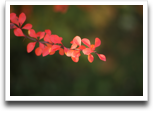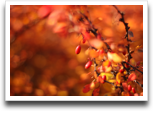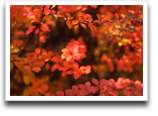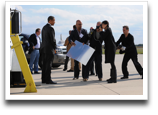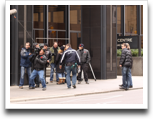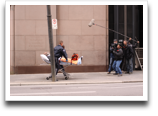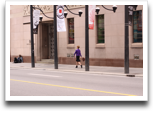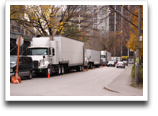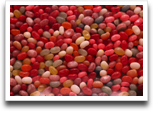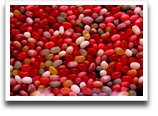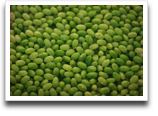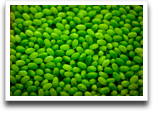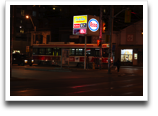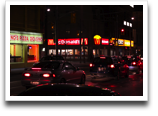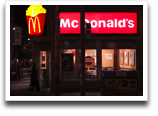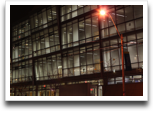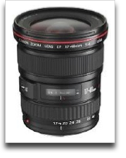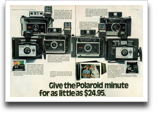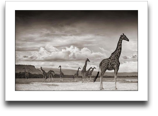This journal documents my experiences with a Canon 50D, my
first DSLR camera, purchased on Oct. 16, 2008. It has some of my
photographs taken with the 50D, comments about the camera's usability
and suggestions for improvement. It also has links to
photography-related sites which I found interesting.
My first digicam was the S30. I chose the Canon brand after
playing with a Canon EOS SLR camera (belonging to a faculty member in
the department). What amazed me about that camera was that Canon
developed technology that tracked your eye and focused the lens wherever
you looked (ECF, eye-controlled focusing). My most recent camera was the
Canon S60, which is in need repair.
Canon 50D Irritants
usability
Sat Nov 01 10:57:52 2008
A list of things that I expect to work a certain way, or things
that make me wonder why they are a certain way (perhaps later, as I
learn the camera, I will understand why) and things that generally
bother me about the 50d:

- No auto-focus with shutter button in LiveView mode (if a
point-and-shoot can do it...)
- Blinking numbers or symbols (the shutter speed blinks, the
aperture value blinks, a circle blinks when corresponding limits
are reached; this is the 21st century: I want a message in English
telling me what's wrong and I want it projected in the
eye-piece and I want errors coloured red)
- Multiple ways of setting the same thing; the top-deck status LCD
(for backwards compatibility to keep the old-timers happy, I
suppose) and the rear status/Quick Control LCD menu (I have
re-considered this irritant and accept that the top LCD is
useful)
- The auto-focus points in the view-finder are difficult to see when
shooting in low light
- the CA mode settings reset after photos are reviewed or if the
camera is switched to another mode (Tue Nov 04 23:26:17 2008)
- A photo can be automatically reviewed (for a customizable
period) after each shot; I would like to zoom-in to the picture
being reviewed without having to press Review and explicitly
entering review mode (Sat Nov 15 14:25:53 2008)
- With the rear LCD on, when you switch to a different exposure
mode; e.g. from Shutter Priority to Aperture Priority, the LCD
shuts off. In the dark, it's difficult to read the top dial, so the
LCD is handy to see what mode you're shooting in. But I have
to keep turning the LCD on every time I switch modes. (Sun Dec
21 12:53:27 2008)
- This is more of a wish— backlit buttons so I can see what
I'm pressing in the dark given how much pressing Canon engineers
expect me to do. A backlit exposure-setting top-dial would be nice
too. Wed Dec 31 22:23:10 2008
-
DP Review: 50D
review
Mon Nov 03 14:35:00 2008
David had sent a link to
the 50D
review. Reading it was helpful as an supplement to the dry
user manual.
I noticed that the charger that I got with the body-only kit
looks different than the one pictured in the review. I still don't
know what the AF-ON button ("The AF-ON button allows you to trigger
auto focus independently of the shutter release 'half-press'.") is
supposed to do— pressing it seems to focus the lens far and
then close in small steps— more reading
required. Page
10 of the review has a movie that shows AF operating in
LiveView mode. Perhaps it's not working for me because I always
have the camera handheld rather than mounted on a tripod or
stabilized. Page
17 has an interesting comparison of the sensor noise levels of
the various cameras; the Nikon D300 is unexpectedly impressive at
ISO1600.
Update Sat Nov 08 12:55:45 2008: After re-reading the
LiveView chapter, I have a better
understanding of the auto-focus in LiveView mode now and it does
work (for some values of "work").

Verve Photo
showcase
Tue Nov 04 00:34:21 2008
Verve Photo
showcases documentary photographers.
Documentary photography involves telling stories of people, with
still pictures (the captions fill-in the details; the photos stand
on their own). Photographing people without affecting the emotions
in the photograph because of the camera's presence, is an art that
cannot be taught.

GO Solitaire
photos
Tue Nov 04 12:35:49 2008
Today's photographs were either in A-DEP (automatic depth of field) mode
or aperture priority at f/1.4. More pics tomorrow.
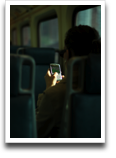 |
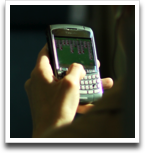 |
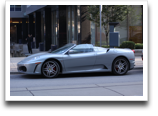 |
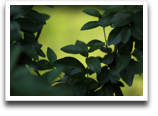 |
A passenger playing Solitaire on her Rogers Blackberry, on the GO Train this morning. This was a lucky shot as the sun fell perfectly to the spot where she was holding the BB. [1 of 4 photos] |
100% crop shows lots of chromatic abberation in the hilights. |
F430 Ferrari Spider outside the Dundee (Wealth Management) building on Victoria. I have a blurry shot of the cockpit. I really miss the wide angle lens; I had to walk across the street to get the the entire car in the frame. A scooter is parked just to the left of the Spider; I now regret not photographing the two together. [1 of 4] |
St. Michaels Hospital hedge along Bond
Street. Nice contrast between the sunlit grass in the background and the hedge. [1 of 3]
|
Some wide photos in A-DEP mode came out blurry. I wonder why.

Night Shoot
usability "low light photography"
Tue Nov 04 23:17:58 2008
Did some night photography on the walk back home. Tried full auto
(with flash) and Creative Assist mode (supressed flash and reduced
exposure). I would have to praise the CA mode for allowing those
learning to use the camera, to take great pictures. Photos
forthcoming. I didn't take as many photos as I would have liked as
I wasn't dressed for standing around in 10°C weather.
Found another irritant: the CA mode settings reset after photos
are reviewed or if the camera is switched to another mode.
This afternoon, I took a 15MP photograph of a student, who was
standing in the Atrium, from about 70 feet away; it was pretty
impressive that you could zoom in and see she was holding an iPod
Touch or iPhone.

Thorny Hedge
photos
Wed Nov 05 13:46:33 2008
Photos taken yesterday morning while walking to work.
This morning I shot everything in Program mode after last night's
low-light shoot. Update Wed Nov 05 17:38:56 2008: Reviewing
the photos, I noticed (and confirmed) that the "Shade"
white-balance gives a yellow-orange tinge to the sunny part of a
photograph taken in the shade. I think the "Cloudy" setting (which
is also recommended for indoors photography) gives a better colour
reproduction.

Exposure Lock
functions panorama
Thu Nov 06 14:01:35 2008
Today, I was browsing through the manual and I discovered,
Exposure Lock ("*" button on the back), that can be used when
taking panoramas.
If the panorama spans dark and bright regions, the camera
re-computes the exposure between successive shots which makes the
panorama look unevenly lit when it is stitched. Pressing the "*"
button locks the exposure setting and keeping it pressed while
panning the camera and shooting, ensures the same exposure is
maintained across the entire panorama.

iPod Bliss
photo
Thu Nov 06 14:01:35 2008
Look to the lady;
And when we have our naked frailties hid,
That suffer in exposure, let us meet
And question this most bloody piece of work,
To know it further.
—Macbeth, II.iii
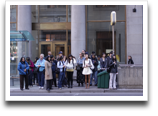 |
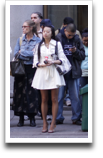 |
iPod bliss: waiting for the King Street
streetcar this morning. Later, I realized that the photograph
prefectly represents all the different ethnicities in Toronto. [1
of 1] |
100% crop: unfortunately, the camera focused
on the building behind the passengers (and for some strange
reason, I didn't notice), so the point of interest is
blurry. |
I have to remember to take more than one photo.
Portfolio: Callie Shell
photos
Fri Nov 07 16:03:22 2008
The Digital Journalist has
an album
of photographs taken by Callie Shell, who travelled with Obama
during his campaign; the Time magazine cover is
suprisingly prescient.
My guess is that the photos were taken with a Nikon (I'm not sure
about the Time cover, probably because the colour-map was
adjusted).

Homeward Bound
photos
Sat Nov 08 10:35:19 2008
Photographs from last Thursday's train trip home. I was standing
in the train vestibule and shooting through plexiglass. I took four
shots at different f-stops and focused at different depths of the
train. I was trying to get everyone in focus— but using a
wide aperture requires a slow shutter speed, which doesn't quite
work on a moving train (the f/4.0 shot was blurry).
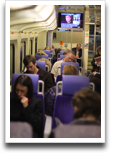 |
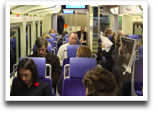 |
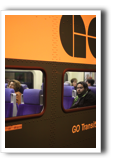 |
In this photograph, focused in the middle, you can see the man at the far end of the train is eating an apple. f/1.8, 1/60s, WB: fluorescent, EV:-.66 |
I increased the aperture (DOF and shutter speed decreased) and focused on the woman in the foreground wearing the poppy. f/2.5, 1/25s, WB: fluo., EV:-.33 |
Taken from outside the train; the platform is
lit with tungsten lights. I am surprised how well this shot turned out. Completely lucky shot taken in Program mode. f/1.8, 1/60s, WB: flou., EV:-1.33 [1 of 1] |
In general, I would say that the 50D tends to over-expose the shot and I have to compensate down one or two notches so the hilights don't blowup.

Manual Mode
functions
Sat Nov 08 18:52:46 2008
But release me from my bands
With the help of your good hands.
Gentle breath of yours my sails
Must fill, or else my project fails
—The Tempest, Epilogue
I found a couple of articles written by Bryan Peterson that
explain the fundamentals required to use the Manual mode. The first
article, Basic Photo Tips: Aperture, Shutter Speed, and
ISO explains the relationships in the
"photographic triangle". The second article, Exposure Basics:
Correctly Expose Your Photographs explains why there are six
possible ways to correctly expose each shot but only one or two are
what you want.

Another Brick in the Wall
photos
Sun Nov 09 12:17:51 2008
I took several wide and close-up photographs of the brick wall for
use as the desktop background but I found they are too busy and the
icons get lost amongst the bricks. The corner photograph with the
blurred edges, below, turned out to be the best choice for a desktop
background.
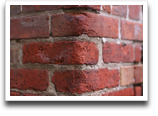 |
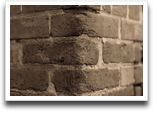 |
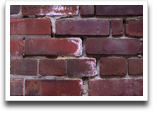 |
Corner of a brick wall in a parkette behind the Staples store on Yonge. f/1.4 [1 of 1] |
The same, but sepia toned. Makes a nice desktop background; the blurry edges are good places for storing icons. |
This photo also makes a nice background. I love deep burgundy of the bricks in this photo, which looks nicer than the real wall. The crystalline white substance looked like water damage. |
Update Sun Nov 09 18:43:41 2008: I added another photograph.

The Big Picture: Obama
photos
Mon Nov 10 13:53:24 2008
The Boston Globe's feature, The Big Picture,
features Obama.
I would guess that Dunand and Young use a Canon.
No. 19 is pretty interesting from a photographer's point of view
(and the photographer is pretty hot). You can tell she's using a
prime lens because she's leaning forward to compose her shot.

Film Shoot
photos
Tue Nov 11 16:10:29 2008
This morning, walking up Bay street, I saw a film crew standing
just in front of the Design Exchange. I took a picture and then I
noticed the assistant cameraman (to the right of the cameraman in
photo 1) picking up the camera and giving it the the cameraman, he
started shooting high and I looked over to see what he was
shooting. As I looked back to the crew, I noticed a EMS crew
exiting the DX with a patient. I missed the shot because I didn't
realize it was part of the shoot until the cameraman began
photographing them. The woman in the last photo is also a
character who exited the DX after the EMS crew.
I am assuming this is a second unit photography for Boondock
Saints II which is currently shooting Downtown. There was a
call for extras, on Monday, for a large crowd scene at the United Metropolitan Church. The equipment trailers were still parked on Bond street, this afternoon.

Sigma Acquires Foveon
technology
Tue Nov 11 18:18:38 2008
Sigma has aquired Foveon, makers of the X3 image sensor.

November 11
journal
Wed Nov 12 09:12:30 2008
Yesterday I shot 144 photographs (not including ones I deleted
because they were obviously blurry).
- Update Wed Nov 12 09:40:25 2008: I almost forgot— I
took my first (usable) Manual mode photographs yesterday. I would only
describe the experience as the most terrifying three minutes I have
spent photographing. This will be a separate journal entry.
- I used Sports mode to shoot from the moving train, which seemed
to work well for the most part.
- I shot some photos of a party going on in the Interior design
building across the street. I used LiveView 10x multiplier to get a
close-up of what was going on and used it to manually sharpen the
focus. I rested the camera on a window sill.
- I also did some night photography on the way home (it was cold
and my fingers were cold because of the wind (I wore wool-cashmere
fingerless gloves), but the camera performed admirably). At the end
of the day, I still had 50% charge.
I think I will get another Sandisk Extreme III 1GB card (Henry's has
them for $39.99; Blacks has them for $49.99). I wasn't able to find
them for cheaper (within walking distance).

Update Sat Nov 15 11:50:51 2008: Photos posted below.
Good Deals
Wed Nov 12 19:01:54 2008
David emailed me about BestBuy having a Sandisk 8GB Ultra II on sale
for $49.99. I dropped by this afternoon and picked one up.
I find that the Ultra II is fast enough for my needs. What I need
mostly is a week's worth of storage as I shoot about 150 pictures a
day (typically three or more of each scene) and only have time
during the weekend to look thorough them carefully and decied what
to keep.
I think the Extreme III is likely useful for those that need to
shoot 6fps continuously.
I also got a couple of good desktop background photos from the
candy section, while I was shopping for groceries at the local
Metro (aka. Dominion). Photos forthcoming if they turned out well.
Jim also mentioned that Henrys has $50 off the 50D body which
means I might be able to get $50 back since they have the Price
Gurantee. Update Thu Nov 13 12:06:03 2008: Dropped by this
morning and got a $56.08 credit on my card. Essentially, I got
a free 8GB CF card out of all these deals.

Portfolio: Arnold Newman
photos
Thu Nov 13 13:57:01 2008
Arnold Newman passed away on June 7, 2008. After looking through
his portfolio,
I realize that many of the iconic photographs of artists I have
seen, were taken by him.
I now realize why it's called "portrait" mode. There's a
photograph of Woody Allen that is framed in portrait mode even
though he's lying horizontally on the bed (99% of photographers
would have framed it in landscape); Claude Shannon's portrait is
also interesting.

You don't take pictures with your camera. You
take them with your hearts. You take them with your minds. The
thing is, if you find a good tool to use, that's nice, and it's
good to use it...but you still have to have a heart about what
you're doing. And again, learn photography, don't learn subject
matter. There isn't a single thing about subject matter that
hasn't been photographed. Subject matter is older than the hills.
First Manual Shoot
experience
Thu Nov 13 14:35:15 2008
The previous night, I played with the camera in Manual mode and learned about
the light-meter and what happens if you ignore it. So, here are the
steps (I have used) to take a photograph in Manual mode:
- Set the camera in Manual (M) mode
- Set the White Balance (sunny, cloudy, etc.)
- Set the ISO; e.g. outdoors, sunny=100, overcast=250, etc.
- Set the f-stop; e.g. for a close-up, use f/1.4 where center is
in focus; for a landscape, use f/8 or f/11 to get everything in
focus
- Look through the viewfinder; along the bottom should be (left to
right) shutter speed, f-stop, light meter, ISO, shots remaining and
the camera-ready indicator
- Look at the light meter; it will indicate a number to either side
of 0.
- Spin the upper dial (which changes the shutter-speed) so that
the indicator moves to zero (the indicator will move in the
direction of spin; that's a nice UI touch)
- Look at ths shutter speed and ask yourself, can you shoot at
that speed? e.g. if you're shooting hand-held and the shutter speed
is at 1 second, the photograph will be blurry.
- If you can, take the shot; if you can't, do one of two things:
- Reduce the f-stop (spin the back dial) until you get a shutter
speed to can shoot at, or
- Increase the ISO (press appropriate button on top and spin the
dial or press joystick on back and navigate to the ISO setting) and
try to get a shutter speed you can shoot at.
The conditions you want before you can take the shot are: first,
for the light meter to be centered at 0 and second, for a
shutter-speed that is fast enough to capture your photograph.
So, being used to taking photographs where the camera is ready to
shoot in under 2s, you can image why I thought shooting in Manual
was so terrifying, especially when I was trying to capture the GO
train pulling into the station at 20km/h. I would say it took me
more than 10s to set the camera and take the first photograph, see
it was blurred, under-exposed, etc. and then a few more seconds to
re-compute the settings and re-shoot.
I'm sure there are short-cuts to my method, especially if I
memorize the exposures/shutter/ISO settings based on known
conditions (and note them down in my moleskine notebook) and set
the camera before attempting my first shot.

Jelly Beans
photos
Fri Nov 14 11:20:33 2008
Some more desktop backgrounds (I have configured my Mac at work to
rotate them every hour and my Mac at home to rotate them after
every wake from sleep).
I found the originals dull and boring (through no fault of the
camera; it was the lighting in the store) so I tweaked the settings
to make them more delicious. The green beans need a lot of "healing"
as the bit of sugar, visible as white spots, are too distracting at
such a close distance. Perhaps if I had stood further away...
I'm sure you will agree that the adjusted images look better than
the originals.

TOnight
photos · lowlight photography
Sat Nov 15 11:42:25 2008
But you're sure you could be right
If you held yourself up to the light
And the embers never fade in your city by the lake
—Tonight, Tonight
Photos taken downtown along Church street, last Wednesday night.
All the photos were taken with the camera braced agains a
lamppost. I selected the aperture (2.8-5.6), WB, and the ISO and let
the camera calculate the shutter speed (which ranged from
1/8-1/15). I wasn't checking the histogram in the reviews, but if I
had, I would have noticed the photos were underexposed. It took 4
tries to get the McDonalds photograph without blowups; by the 4th
photograph, the pair of girls hugging in front of the restaurant
had left.
Update Sat Nov 15 15:00:57 2008: Perhaps subconsciously, I
decided to re-watch The Godfather, Part II this
afternoon. The film is famous for not only being better than the
original, but for Gordon Willis' "under-exposed expressionism".

"Imaging Resource" Review of the 50D
review
Sat Nov 15 14:19:57 2008
Another good review of the 50D
by Imaging
Resource; it includes comparisons with the 40D and the Rebel,
and has sample photographs.

Gigapan Tripod and Panoramas
hardware panorama
Mon Nov 17 17:43:21 2008
A motorized
tripod is available, for mounting DSLRs, for gigapixel panorama photographs.
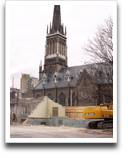 |
 |
A three-image panorama of the demolition of
the United Metropolitan Church's rectory along Shuter street, taken
last Thursday. In the background is St. Michael's
Cathedral. The camera was held in landscape. |
A two-image panorama looking north up Royal
York road from the train stopped at Mimico GO station. The
original panorama is about 6k pixels wide and clear enough that
the sign next to the schoolbus can be clearly read. The
two-different shades are because I didn't exposure lock. The
colours also look a bit strange because the train had tinted
windows. |
Last night I switched to shooting 15.1 MP images with the 8GB
card; the camera says I can take approximately 1,700+ photos.

Fantastic 4
photo
Tue Nov 18 17:54:18 2008
Jim brought his EOS3000 and I got a chance to use
his EF
28-80mm f/3.5-5.6 II lens which was the camera's kit-lens.
The wide end (35mm equivalent at 1.6x), is a deep breath of
freedom when compared with my 50mm (80mm equivalent at
1.6x). However, being used to shooting at f/1.4 indoors this lens
takes some getting used to. Today was a pretty bad day to test this
lens outdoors as it was mostly overcast. In general, I would say
this lens lacks crispness.

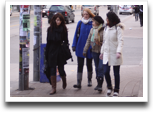 |
I spent an hour this afternoon shooting 56
photographs in program mode and aperture priority. Most of this
shooting was work-related— I will be using these photographs
for the departmental website homepage background. I did sneak one
photograph of four fashionably dressed students; it's cropped and
sharpened.
|
Advice for Budding Photographers
philosophy
Wed Nov 19 00:06:27 2008
David sent me an article on Magnum's blog with thoughts and
suggestions about photography from
several Magnum photographers.
Sometimes, one photographer's advice to look at other
photographer's work, is contradicted by another who perfers to not
be influenced by others; I suppose it's up to each of us to
decide.
I liked Constantine Manos' advice, "... show us something we have
never seen before and will never see again." I would like to think
that the "Fantastic 4" photograph, above, was inspired by this
philosophy.

A Lifetime of Photographs
photos
Wed Nov 19 08:07:26 2008
Google is hosting the entire photo archive of LIFE Magazine.

EF 28-80mm f/3.5-5.6 II
lens photos
Fri Nov 21 13:43:41 2008
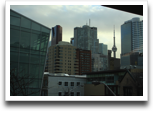 |
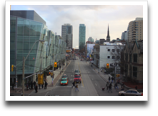 |
Two photographs looking
south-west and south from the Rogers building at Church and
Gould. Overcast skies are great for photographic panoramas and
on-location movie shoots, since they bring their own
sun. |
Sample photographs with Jim's lens at 28mm. My verdict: this is an
outdoor lens; indoors, in low light, it delivers blurry photographs
unless using 1600+ ISO.

"canon elf"
google
Fri Nov 21 16:53:16 2008
Looking through the web access logs, it is regrettable that Canon
(also spelled "cannon") makes a camera called the "Elph" (also
spelled "elf"), which inevitably leads them here.

Considering the Canon EF 17-40mm f/4 L
lens
Fri Nov 21 17:18:15 2008
After a suggestion by a faculty member, I am considering the Canon
EF 17-40mm L wide-angle lens. Pricing is quite varied:
The reviews
are very favourable, as is the comparison with
the Canon
16-35mm f/2.8L (twice the price for twice the light). The
primary advantage over the 24-70mm f/2.8L is the weight (approx.
half) and the wider angle.
He also suggested that I could likely negotiate it down to $700,
or if I waited until Boxing Day, I could avoid the sales taxes. My
lack of people skills make negotiations impossible and I have a
low tolerance for shopping-frenzy crowds.
I am hesitating on the purchase because I prefer a versatile
lens— usable both indoors (meaning faster than f/4) and
outdoors and I prefer a prime (less glass means more
light). Canon's wide-angle prime lenses, however, are quite
"sucky". 
Update Sat Nov 22 16:15:07 2008: David responds with some
suggestions:
What's your budget? Canon has a 24 mm f/1.4L for $1300, with a less
expensive f/2.8 at $500. 28mm f/1.8 and f/2.8 can be had for $600 and
$300. I don't see the half-stop going from 1.8 to 1.4 being worth $700
IMHO.
Gruber shoots (only) with 50mm and 28mm, both f/1.8.
Note that once you get into the f/3.5 range getting any kind of bokeh
is difficult at these focal lengths. You probably want to stay below f/
2.8 if you want any meaningful blur.
Remember that you'll replace your body before you replace your lens,
and if you ever stop being interested in photography, lenses don't
depreciate as much as bodies.
My budget is virtually unlimited, but at this early stage, I
refuse to buy a lens that cost more then the body ($1400) just as a
sanity check— I don't want to buy optically fantastic lenses
that collect dust at home.
Eventually, I want a (indoor/outdoor) wide-angle lens (24mm or
less), a 50mm (I'm happy with my f/1.4 USM) and an indoor sport
lens—
85mm (f/1.8
or f/1.2L)
or 100mm.

Ad: Polaroid Land Cameras
hardware
Sat Nov 22 12:10:59 2008
During some housekeeping on my Mac, I found a New Yorker
magazine ad from the 70s (I didn't note the issue) for Polaroid
Land (I assume it means "landscape") Cameras, ranging in price from
$200 for the top-of-the-line camera with a f/3.8 lens and 1/500s
shutter speed (top right), down to the $25 el cheapo
(bottom left).
Update Sun Nov 23 09:58:56 2008: Land does not refer to
'landscape'; it's named after the founder of Polaroid, Edwin
Land. When I did a Wikipedia search for Polaroid Land Cameras,
there was no entry that redirected
to Land Camera.

GO Trains: Night and Day
photos
Sun Nov 23 00:25:18 2008
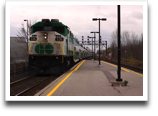 |
 |
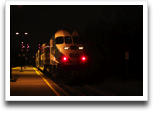 |
This is a Manual mode photograph taken of
the old F45, soon to be retired engines, pulling into Port Credit
station. It looks a bit underexposed. [1 of 3] |
This is one of the new engines being
introduced into service which is capable of pulling 12 cars. [1 of 3] |
A night shot, taken in Program mode, of the
20:07 train pulling out of Port Credit station (engine is at the rear of
the train). [1 of 1] |
All the stations are having the platforms lengthened to
accommodate 12 cars; the new platform sections can be identified
from the thicker yellow warning lines.

Portfolio: Nick Brandt
photos "black and white"
Mon Nov 24 06:08:04 2008
Stunning black and white photography of the animal kingdom
from Nick
Brandt. Try to guess the lens he's using for each photograph.
Black and white photography is my holy grail. I see the world in
colour, not as shades of light and darkness. One exercise I perform
when I review my photos, is to preview them all in black and white,
just to see how they would look— there are some that I think
will look great in black and white, but they don't; then there are
ones I don't expect to look good, but they look surprisingly good.

Black and White Photos
photos "black and white"
Tue Nov 25 00:00:28 2008
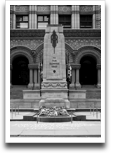 |
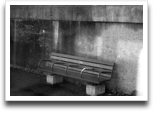 |
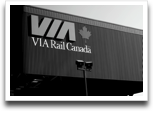 |
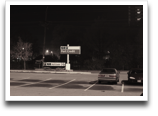 |
The WWI Memorial in front of Old City Hall,
taken from across Queen street, the day after Rememberance Day. [1 of 3] |
Bench on the Track 3 platfrom at Exhibition
station. I think it's a combination of the the texture of the
wall and the lighting that makes this
photograph interesting. [1 of 1] |
VIA Rail sign on the train-wash hanger at the
Willowbrook train yard. Again, the texture of the corrugated
metal and the various shades of grey make it interesting. Taken
from the moving train in Sports mode.[1 of 1] |
A night-shot in Program mode showing the old
(now removed) signage (left) and the new signage at the Port Credit
station parking lot. [1 of 6] |
Both the bench and the war memorial look better after having been
converted to black and white. For some reason, the reflection of
the train windows onto the concrete is more prominent in the
thumbnail than on the actual photograph.
The parking lot signs look good in both modes. The VIA Rail sign
looks a bit better in colour. The contrast has been tweaked on some
of the photos.

Portfolio: Aneta Kowalczyk
photos
Thu Nov 27 01:15:26 2008
Beautiful
models, beautiful, hair, beautiful makeup, beautiful clothes,
beautiful lighting— all the ingredients (plus a good camera
and lens) necessary for beautiful fashion photos (without beautiful
clothes, the photographs become erotica). My guess is that she
uses a Nikon.
If you look at the model's eyes in the closeup photographs of the
third shoot, you can see the photographer's lighting rig.
Her black and white shoots are also superb.

RMS Photos
photos
Thu Nov 27 13:59:45 2008
Some nice photographs of RMS in France taken with a Canon 1D Mark
III and a 17-40mm f/4L lens.

Top-side LCD
usability
Thu Nov 27 16:59:11 2008
After a month of using the camera, I have to retract my statement
about the top-side LCD being "old school". I have found the
top-side LCD handy when needing to quickly change the AF modes
between One Shot, AI Focus and AI Servo.
The alternate way to change the focus mode, is to use the rear LCD
via the QuickControl menu (after pressing the joystick).






